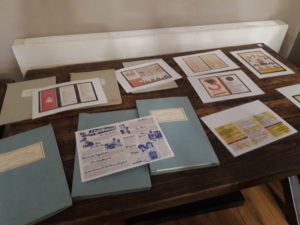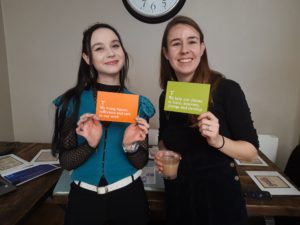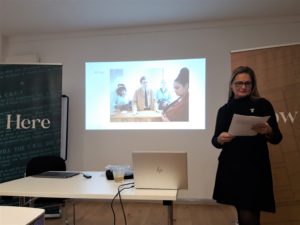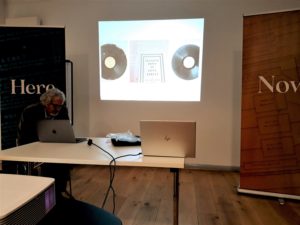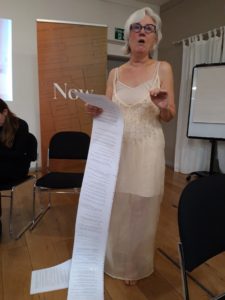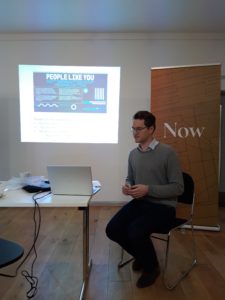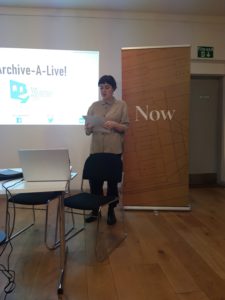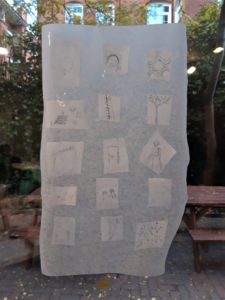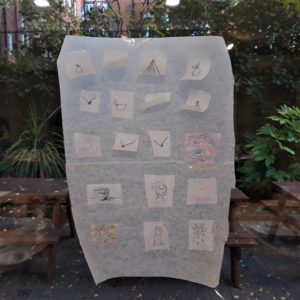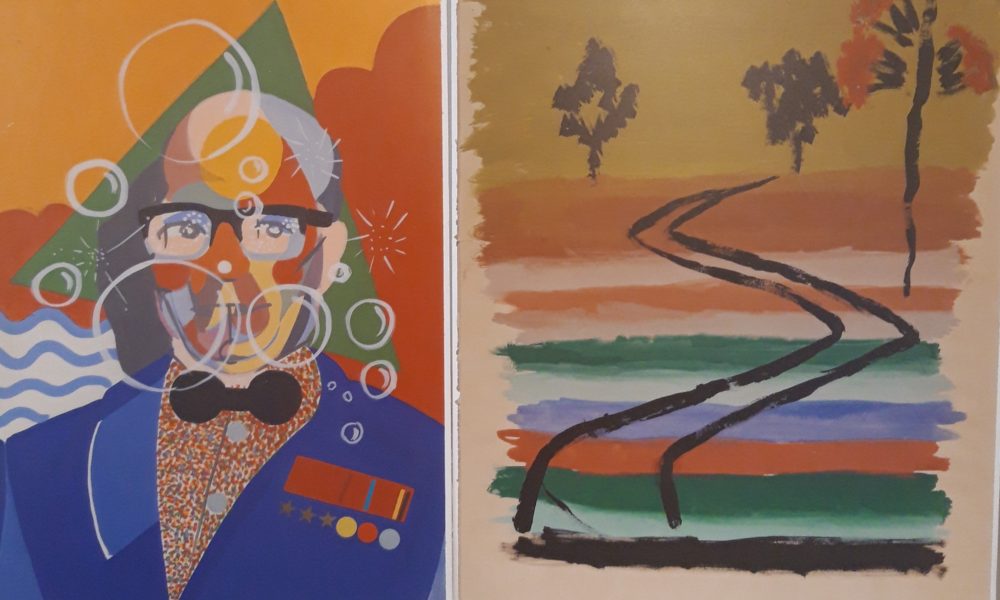
Archive-A-Live! Reflections
On Thursday 7th November just before 10am, a group of us gathered at St. Luke’s Community Centre in Shoreditch, ready to begin an exploratory day that would delve deep into the Tavistock Institute of Human Relations’ (TIHR) archive. As the Tavistock Institute’s CEO Dr Eliat Aram stated in her opening speech, art has a way of opening the mind, and the symposium certainly did just that.
- Archive Material
- Meg and Becki from TIHR
Not only was the archive thoroughly examined throughout the day, it was brought alive. The first two presentations of the symposium by E15 Acting School’s Ainslie Masterton and artist and lecturer Professor Chris Dorsett looked into the embodied ways of accessing psychologically complex material through theatre and art respectively. Ainslie spoke about her student’s theatrical performances that were based on material that they found in the archives, whilst Chris explored the relationship between art and the archive; their presentations redefined the researcher as script writer and curator.
- Ainslie Masterton
- Professor Chris Dorsett
After the first break, there were two unique yet complimentary research perspectives on London Lighthouse, the centre and hospice for people with AIDS and HIV that closed in 2015. Firstly, we were witness to Wanda Klenz’s dynamic and immersive performance of the Acts of Mercy, as she left her microbiologist alter ego Angela Hodgson at the door. Her work was inspired by a series of large symbolist paintings by Cayley Robinson (1915-20), which were commissioned for the Middlesex Hospital, London W1, where some of the first HIV and AIDS patients in London were looked after and treated. Following her was Goldsmiths University’s Will Viney’s informative presentation on Tavistock to the Lighthouse, where he discussed the Tavistock Institute’s relationship with London Lighthouse.
- Angela Hodgson aka Wanda Klenz
- Will Viney
As the day progressed, the event curator and TIHR’s Artist in Residence/Principle Consultant, Juliet Scott, noted that five reoccurring themes had appeared quite naturally out of the performances and presentations that we had seen so far. These were: Performance, Obstacles, Objects, Cleansing and Self. It was only natural then to divide into five groups – one for each theme – and share our thoughts with our fellow participants about the varying material we had encountered in the symposium and how they related to the theme we were assigned. It was fascinating when we finally came together as a whole again, as there was a continual flow of responses and ideas as we moved from theme to theme, interweaving them together.
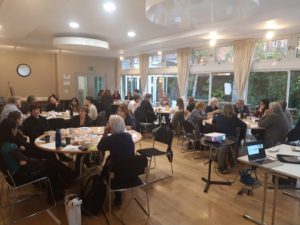
The symposium proved to be a perfect opportunity for Antonio Sama, a Senior Lecturer from Canterbury Christ Church University, to present and receive feedback on his rereading of Wilfred Bion’s Experiences in Groups (PDF).His thought-provoking presentation generated a lot of discussion amongst the participants.
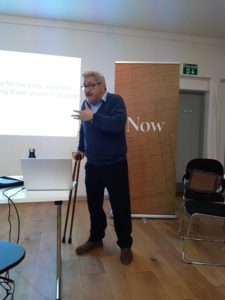
Antonio Sama
The day came to a reflective conclusion with the Tavistock Institute’s archivist Karen Kiss and fine art student Niamh Bailey reading their respective articles written for the archive blog. Karen’s I felt like I was there described her findings from working with the digital archives of the Tavistock Institute’s Leicester Conference, whilst Niamh’s Accepting the Constancy of Subjectivity spoke about her experience of the archive during her work experience week at the Tavistock Institute and how it related to her artistic practice.
- Karen Kiss
- Niamh Bailey
It was certainly an invigorating day, full of fascinating and diverse content that brought the Tavistock Institute’s rich archive to life.
- Artwork that was created by the participants in response to Wanda Klenz’s performance
By Lucy Walker, the Tavistock Institute’s Engagement Assistant
Featured Images from the Wellcome Collection’s pop-up display that included associated material from their collection as well as items from the Institute’s archive. These artworks are from the Adamson Collection and illustrate other preoccupations with mental health to complement the large amount of material in the TIHR catalogue on mental health.
The Tavistock Institute of Human Relations’ archive can be found by searching on Wellcome Library’s online catalogue, using the reference: SA/TIH.
